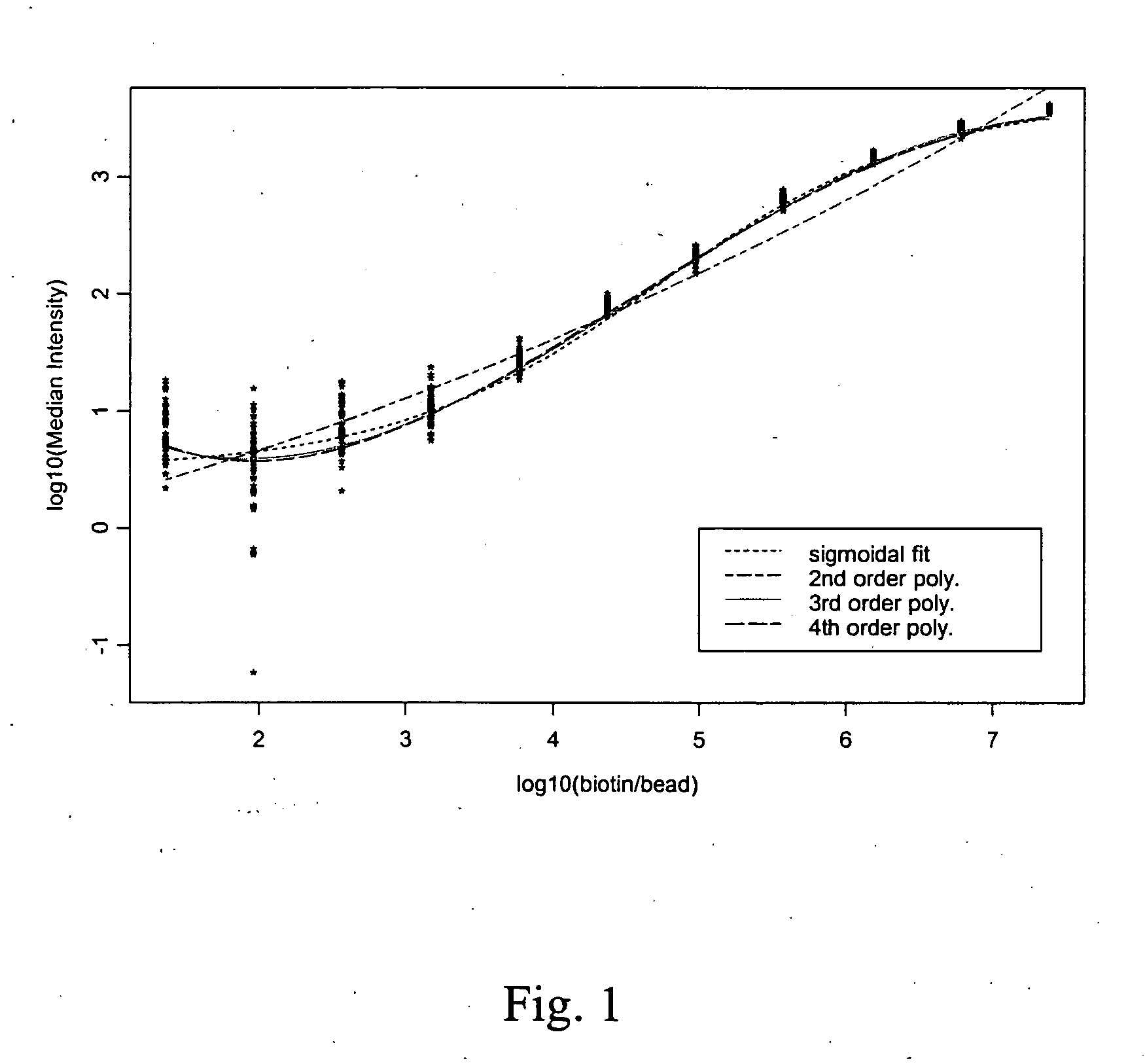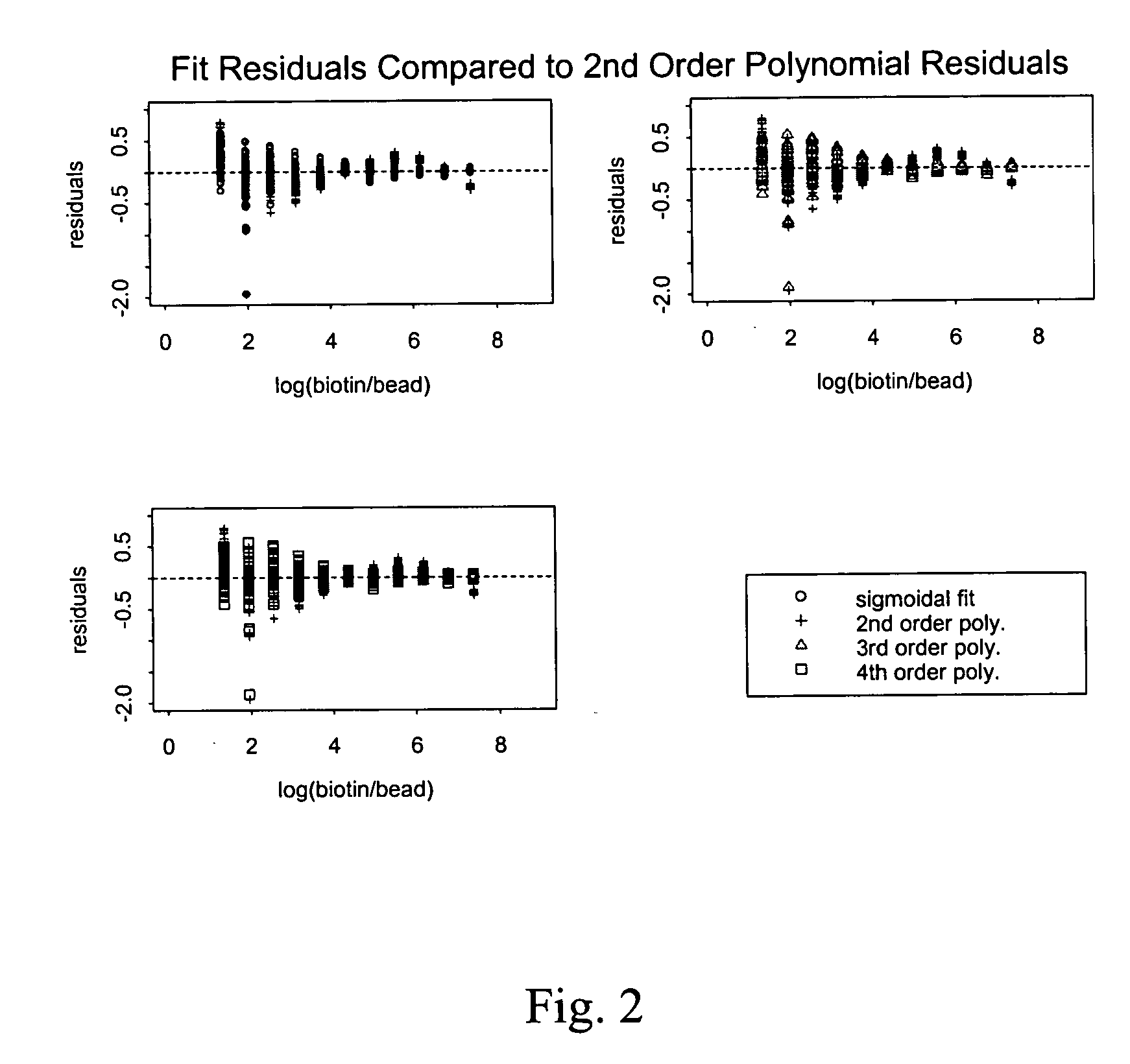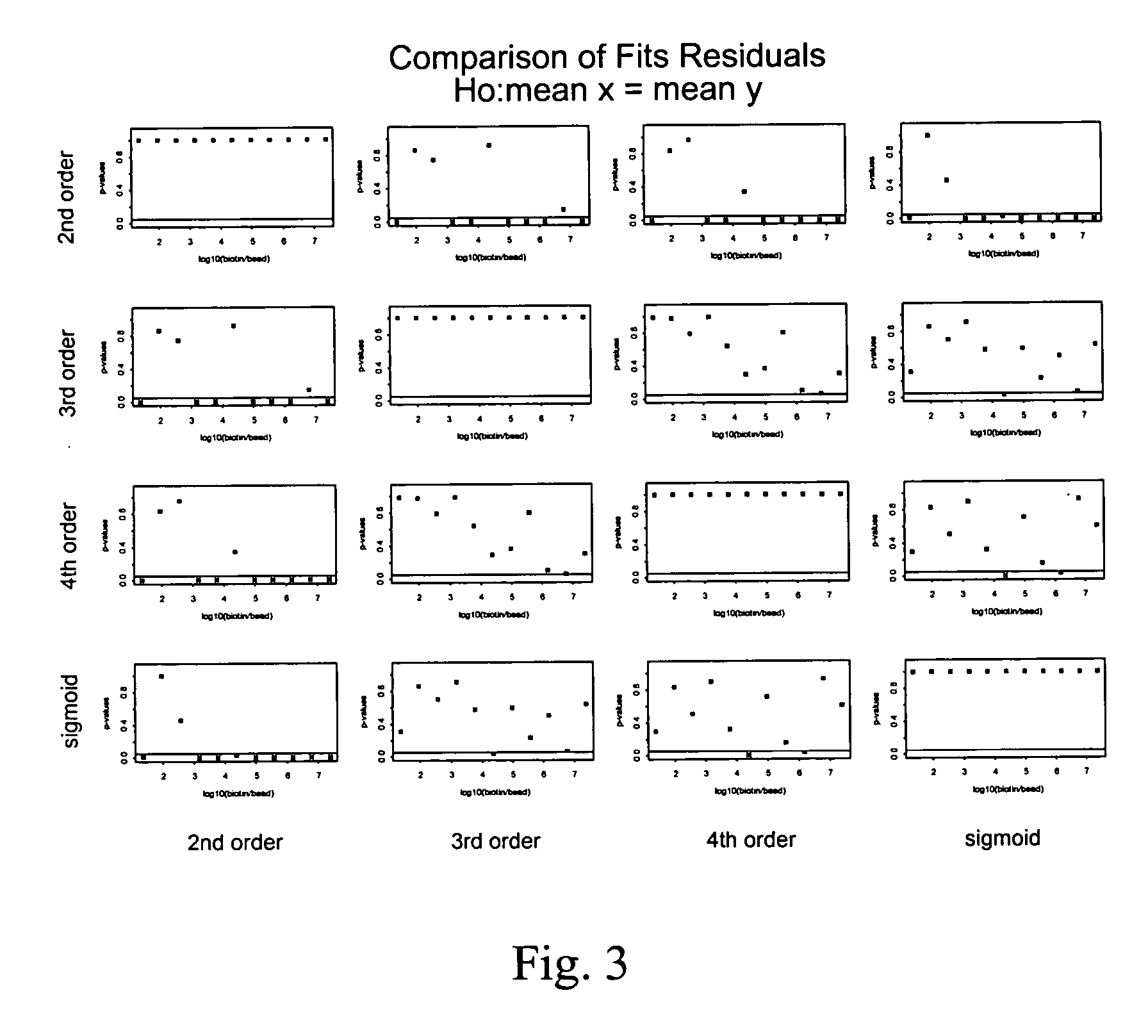Quantum dot-encoded bead set for calibration and quantification of multiplexed assays, and methods for their use
a technology of multiplexed assays and quantification methods, applied in nanoinformatics, instruments, cooking vessels, etc., can solve the problems of reducing the accuracy of target analyte quantitation, so as to improve the determination of analyte concentration
- Summary
- Abstract
- Description
- Claims
- Application Information
AI Technical Summary
Benefits of technology
Problems solved by technology
Method used
Image
Examples
example 1
Preparation of Quantum Dot Nanoparticles
[0052] The preparation of quantum dot nanoparticles is well known in the art. Exemplary methods of preparing quantum dots are described in U.S. Pat. Nos. 6,207,299, 6,322,901 and 6,576,291, and in the publication “Alternative Routes toward High Quality CdSe Nanocrystals,” (Qu et al., Nano Lett., 1(6):333-337 (2001)). Quantum dot nanoparticles are commercially available from Quantum Dot Corporation (Hayward, Calif.). The preparation of quantum dot nanoparticles has been the subject of many patents and publications, the following are several examples. The use of alloyed or mixed shells has been described in U.S. Pat. No. 6,815,064. The use of a promoter to make quantum dot cores has been described in U.S. Patent Publication No. 2003 / 0097976 (published May 29, 2003). Surface modification methods in which mixed hydrophobic / hydrophilic polymer transfer agents are bound to the surface of the quantum dots are suggested in U.S. Pat. No. 6,649,139.
example 2
Preparation of Quantum Dot Nanoparticle Impregnated Microspheres
[0053] Methods for making quantum dot nanoparticle impregnated microspheres are well-known in the art. The preparation of quantum dot nanoparticle impregnated microspheres has been the subject of many patents and publications, the following are several examples. U.S. Pat. No. 6,479,146 describes methods using electrostatic self-assembly of nanocomposite multilayers on decomposable colloidal templates. International Publication No. WO 00 / 77281 (published Dec. 21, 2000) described encapsulation of crystals via multilayer coatings. International Publication No. WO 01 / 51196 (published Jul. 19, 2001) described the templating of solid particles using polymer multilayers. International Publication No. WO 99 / 47252 (published Sep. 23, 1999) described the use of layer-wise polyelectrolyte self-assembly to prepare nanocapsules and microcapsules. U.S. Pat. Nos. 6,548,171 B1 and 6,680,211 B2 describe microspheres with embedded fluor...
example 3
Preparation of Binding Calibration Beads
[0054] The following protocol was used to prepare beads incorporating approximately equal quantities of orange and red emitting quantum dot nanoparticles. The beads can be conveniently separated from suspension either by bench-top centrifugation or magnetic separation during the wash steps and deposition steps. Spherical polystyrene base beads (9 μm, paramagnetic core, underivatized) were purchased from Polymer Laboratories (Shropshire, UK). The base beads (20 mg, 500 μL as a 4% solution) were washed with water and then incubated with poly-ethyleneimine (10 mL, 4%, about 25,000 g / mol MW, Aldrich Chemical (St. Louis, Mo.)) for 30 minutes. The beads were washed ten times by agitation in water followed by centrifugal separation and re-suspension.
[0055] Following the wash steps, the beads were further incubated with amphophilic polymer-solubilized CdSe / CdZnS core-shell quantum dot nanoparticles emitting at 591 nm (68.07 μL, 8 μM) and similarly p...
PUM
 Login to View More
Login to View More Abstract
Description
Claims
Application Information
 Login to View More
Login to View More - R&D
- Intellectual Property
- Life Sciences
- Materials
- Tech Scout
- Unparalleled Data Quality
- Higher Quality Content
- 60% Fewer Hallucinations
Browse by: Latest US Patents, China's latest patents, Technical Efficacy Thesaurus, Application Domain, Technology Topic, Popular Technical Reports.
© 2025 PatSnap. All rights reserved.Legal|Privacy policy|Modern Slavery Act Transparency Statement|Sitemap|About US| Contact US: help@patsnap.com



